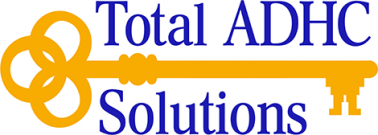Adult Day Services: The Team Approach to Fall Prevention
Among those over the age of 65, falls are the leading cause of injury and death (1). They are also the most common cause of non-fatal injuries and hospital admissions from trauma (2). In 2010, the costs of falls, adjusted for inflation was thirty billion. Those 75 and older who fall, are 4-5x more likely than those who are younger, to be admitted to a long term facility for a year or longer. (3) Falls in the elderly are costly, both from a quality of life and financial perspective, and preventable.
Most falls experienced by the elderly are not caused by a single diagnosis or health risk, but more commonly, a range of interconnected problems requiring a multipronged approach of a well-rounded multidisciplinary team like that found in Adult Day Service Centers. Each individual discipline supports the reduction of risk and falls through targeted interventions, following a thorough, individualized and person-centered assessment.
For example; Mrs. Jones is a participant with a history of hospitalizations, due to falls, suffering from depression, diabetes, pain, unsafe home environment and gait problems. Although Mrs. Jones may receive some benefit from nursing or physical therapy interventions, these alone will not provide maximum reduction of risk. To achieve this, all appropriate members of the team must be involved and on a continuous basis; the dietician to educate regarding diet and assess adherence, the RN to address the participant’s medication regimen and provide education, the physical therapist to address the participant’s gait impairment and pain, the social worker to provide case management to improve the home’s safety and the psychological consultant to address the participant’s mood. Additionally, within the milieu setting during the program day, the team will continue to observe Mrs. Jones, providing reinforcement and support of interventions and education. They will also observe if treatments are working in the “real world” and provide adjustments – further refining treatments to provide optimal results.
“Falls” is not a diagnosis like diabetes, or osteoarthritis and are generally not the result of one diagnosis, but multiple interconnecting diagnoses. Preventing falls cannot be accomplished through the occasional provision of one or two treatments. Providing the best outcomes and reducing health care expenditures begins with an integrated plan of care that utilizes multiple treatments and a team approach like that found in Adult Day Service Centers.
And by the way… as Adult Day Services are generally reimbursed at a “per diem” rate, the cost of a full day of care, which includes all required disciplines and consultant services as well as hours of observation from professional health care workers, socialization and exercise, may be less costly than one home health nurse or physical therapist visit.
- http://www.cdc.gov/ncipc/olderadults.htm
- Hornbrook MC, Stevens VJ, Wingfield DJ, Hollis JF, Greenlick MR, Ory MG. Preventing falls among community–dwelling older persons: results from a randomized trial. The Gerontologist 1994:34(1):16–23.
- Stevens JA. Fatalities and injuries from falls among older adults – United States, 1993–2003 and 2001–2005. MMWR 2006a;55(45).
